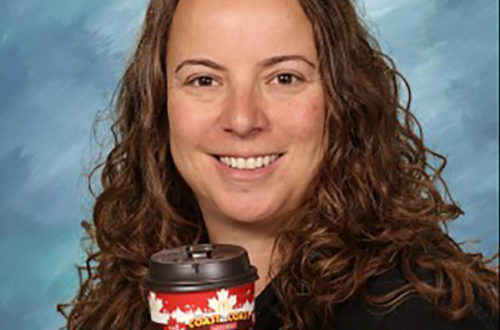Journal of the Mathematics Council of the Alberta Teachers’ Association
Volume 51 Issue 2, June 2014
Sometimes the theme of an issue develops as I work on it; sometimes it emerges through the articles submitted. Sometimes 1 cannot make connections until 1 sketch out my ideas for the editorial. Such is the case with this issue. As I write, I am distracted by my need to meet a variety of upcoming deadlines involving both my work and my holiday preparations with family and friends. I am trying to clear my in box and am sorting through a variety of messages about the PISA results just released. A number of newspaper articles have been forwarded to me, and I am expected to make some response. I return to my work on delta-Kand scan the articles I have compiled, and suddenly a theme jumps out at me: making sense of abstract ideas.
Carol Matsumoto, the Canadian director for the National Council of Supervisors of Mathematics (NCSM), sent me the NCSM position paper that is included in this issue. It focuses on the importance of using manipulatives to make sense of abstract ideas. This organization’s membership includes supervisors, teachers, principals, department heads, department of education personnel and math coaches. The voices of its members have been significant in shaping math curricula across North America. Jerry Ameis considers the tensions inherent in making sense of numbers by presenting a one-act play. The importance of manipulatives and making sense of formulas is captured by Gerald Krabbe, who sent me a photo montage of one of his students, Michelle, creating a visual demonstration of the formula for finding the area of a circle using pizza.
I have included a reprint of an editorial by Elena Braverman as a feature article. Here she identifies the issue with a one-size-fits-all approach to math education and provides us with the arguments surrounding the importance of learning technical skills in mathematics. This serves as a catalyst for what I hope will be a flood of reader responses.
Making sense of how to assess student thinking is the focus of the lessons presented by Trisha Vadnais and Carole Kamieniecki. Both authors grapple with how to meaningful1y engage their students in thinking mathematically.
John Grant McLaughlin invites us to reconsider the role of recreational mathematics in our attempts as teachers to engage our students in making sense of abstract ideas. His work resonates with me as r prepare to teach a mathematics education course to elementary preservice teachers.
In the current context of media responses that describe frustrated parents, an ineffective math curriculum, inadequate preparation of teachers, a lack of professional development opportunities and low PISA test results, I offer a challenge to you as we consider the concerns of members in our communities. It may be time to engage in a deliberate process of educating the public. It may be time to present ourselves as professionals who understand the implications of emerging brain research and research on learning. It may be time to actively participate in the design and implementation of math curricula. It may be time to make a significant difference to views of mathematics education. I invite you to submit responses for publication in upcoming issues of delta-K.
Enjoy the summer holidays!
Gladys Sterenberg
1
2
Gladys Sterenberg
3 – 10
MCATA Conference Committee 2013
11 – 14
Improving Student Achievement Series No 11 / Spring 2013
National Council of Supervisors of Mathematics
15 – 16
Sigmund and Joe: A Moment in Math
Jerry Ameis
17
Michelle Peace
18 – 20
Elena Braverman
21 – 22
Exploring Angles by Making Paper Airplanes
Trisha Vadnais
23 – 29
Geometry with Three Pigs, One Wolf and Seven Magic Shapes
Carole Kamieniecki
30 – 32
Recreational Mathematics: An Avenue to Engaging in Mathematical Development
John Grant McLoughlin
33



